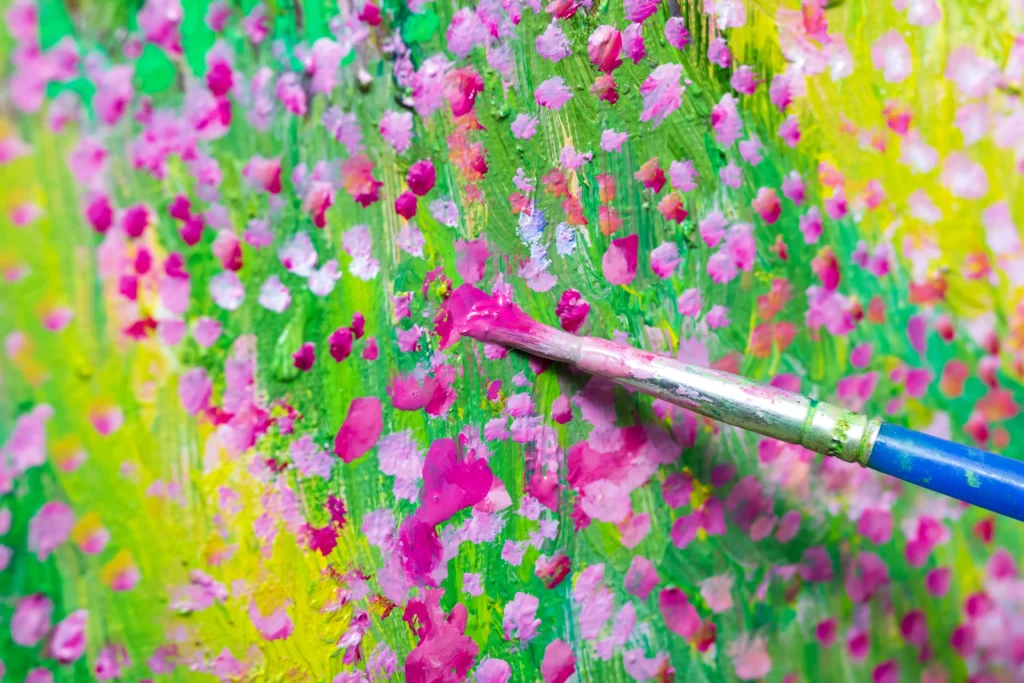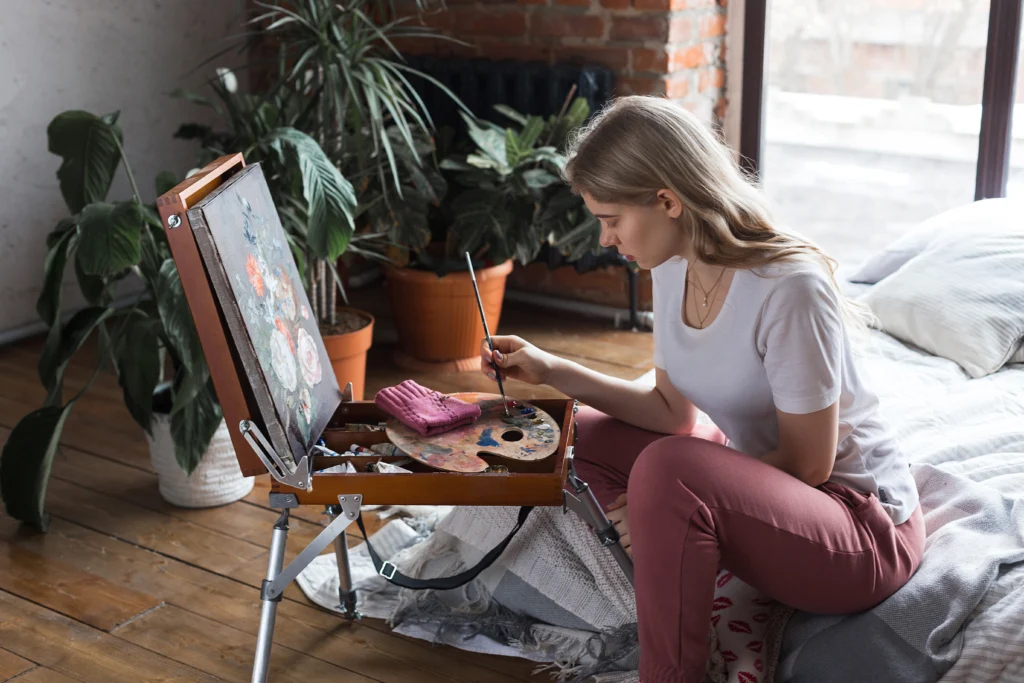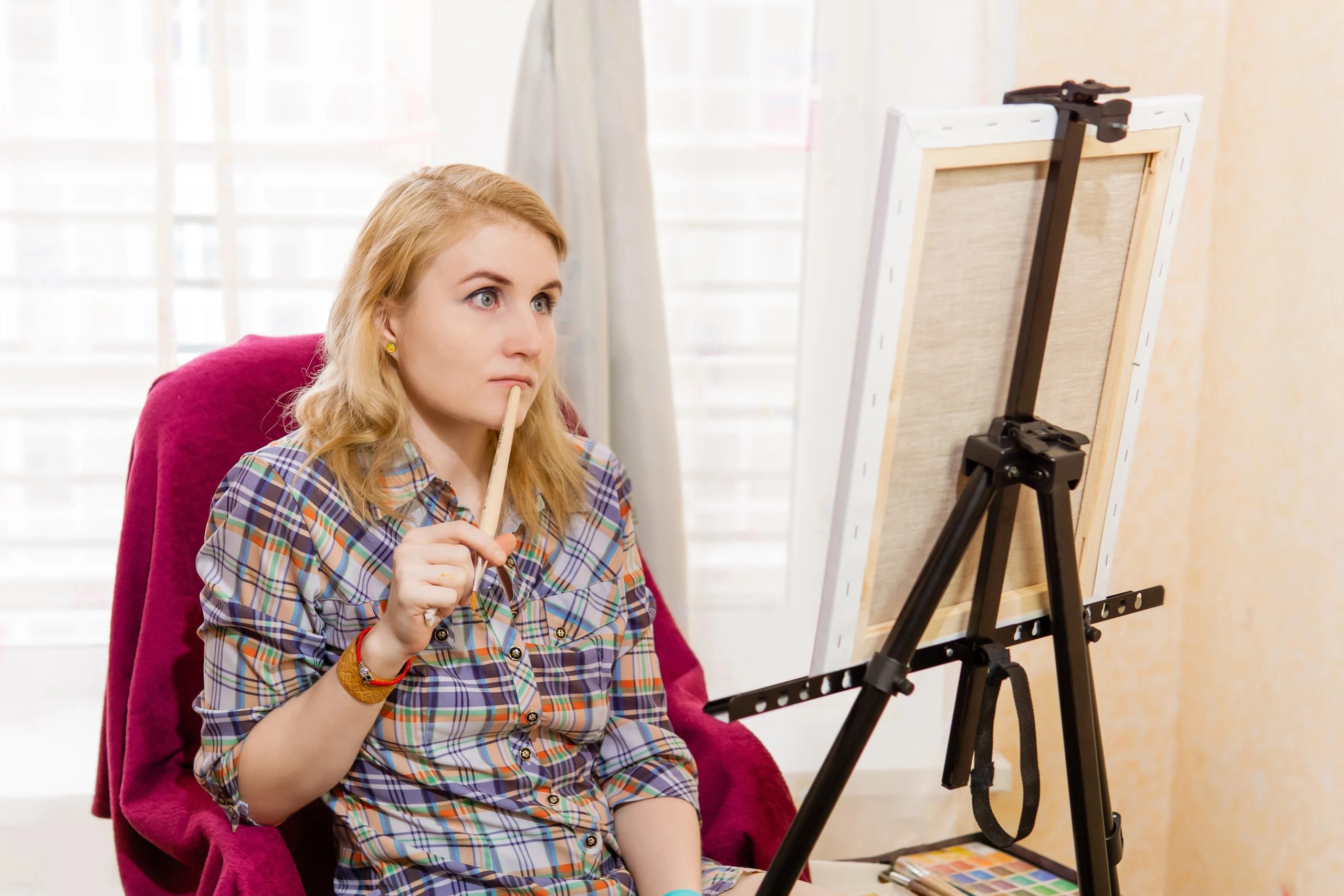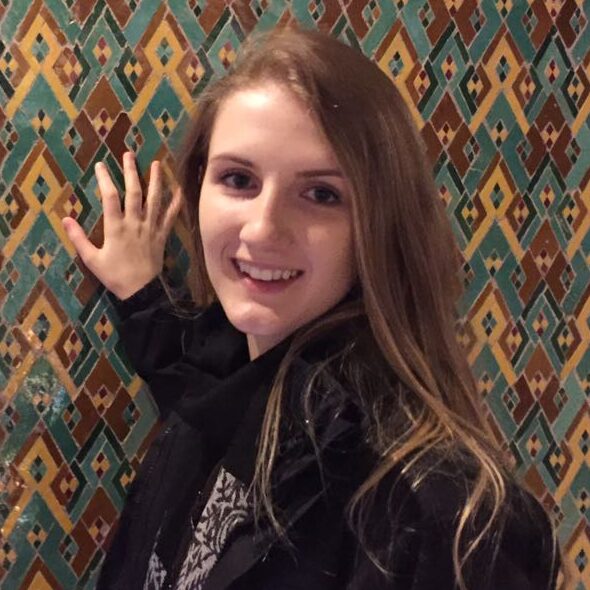Introduction
Creative block in painting is one of the biggest challenges any artist can face. That feeling of being in front of a blank canvas, not knowing where to start, is something many of us have experienced. It can be frustrating and distressing, especially when we feel like we’re losing the ability to express our emotions and ideas. However, creative block goes beyond a simple lack of inspiration.
This block can reflect deeper emotional issues, such as fear of judgment, excessive self-criticism, or even the pressure to create something perfect. Recognizing that creative block is often a reflection of emotional and psychological states is the first step in overcoming it. In today’s article, we will explore how creative block in painting can be understood and how it can be overcome through therapeutic and creative techniques.
What is Creative Block in Painting?
Creative block in painting is a common yet deeply frustrating experience. It occurs when the artist feels they cannot produce or create fluidly, regardless of their technical ability. The block can be much more than a simple lack of ideas; it is often a reflection of internal issues that need to be explored. Here are some of the most common signs:
Procrastination
Constantly delaying the moment to start painting is a classic sign of creative block. It may seem like there’s always something more important to do, or that the perfect moment to begin never arrives. However, procrastination is often linked to the fear of failure or perfectionism.
Paralyzing Perfectionism
The incessant pursuit of perfection can paralyze any artist. When the focus on the final result is greater than the enjoyment of the creative process, the block intensifies. The fear of creating something “bad” or “imperfect” can cause us to freeze in front of the canvas.
Excessive Self-Criticism
The inner voice that says “this won’t work” or “you’re not talented” is a silent yet powerful enemy. Excessive self-criticism can undermine the artist’s confidence, making painting something scary rather than enjoyable.
Lack of Direction
Sometimes, the block manifests as a feeling of being lost, not knowing what to paint or how to start. This sense of directionlessness can be a reflection of an overloaded or emotionally drained mind.
Emotional Exhaustion
Creative block can also be linked to emotional burnout. If the artist is dealing with stress, anxiety, or other emotional difficulties, it can be difficult to find the energy needed to connect with art.
These symptoms are not just signs of “lack of inspiration.” They often indicate that there is something deeper that needs to be addressed in order to allow the creative flow to be restored.
The Emotional Connection with Creative Block
Our emotions play a crucial role in our ability to create. When we are under stress, anxiety, or any other type of emotional tension, our creativity can be severely impacted. Painting, like other forms of art, requires a free state of mind, where intuition and emotional expression can flow without restrictions. When these negative emotions dominate, access to our creativity can become blocked.
Fear of Judgment
The fear that the work won’t be “good enough” can be paralyzing. This fear may stem from past experiences or even from the pressure we place on ourselves to meet the expectations of others, such as art galleries or critics. The fear of not being accepted or appreciated can prevent any attempt to begin.
Stress and Anxiety
When we are anxious or stressed, our minds tend to focus more on external problems and concerns than on the creative process. The overloaded and anxious mind often blocks access to the brain areas responsible for creativity and imagination.
Perfectionism
Perfectionism is a major villain in creative block. It causes the artist to seek an idealized version of perfection, turning the creative process into a burden. When we constantly chase the unattainable ideal, the fear of failure makes the start of any artwork an insurmountable challenge.
Lack of Self-Confidence
Often, creative block is fueled by a lack of self-confidence. Doubting one’s own artistic ability can prevent any attempt to create. This lack of confidence may stem from past experiences of failure or negative criticism that still echo in the artist’s mind.
Traumas or Past Experiences
Unprocessed feelings, traumas, or past experiences can create emotional barriers that manifest in our ability to create. The block may arise as a defense mechanism, preventing the expression of emotions that have not been fully dealt with.
Understanding the connection between these emotions and creative block is key to overcoming it. By recognizing the block as an emotional reflection, we can address the root cause and begin to work on overcoming it.

Painting Techniques to Overcome Creative Block
Painting can be a powerful tool for unlocking creativity and releasing repressed emotions. Instead of focusing on the final result, the following techniques aim to free the creative process and allow ideas and emotions to manifest spontaneously.
Intuitive Painting: Freeing the Mind
Intuitive painting is a technique where the artist allows themselves to paint without a predefined plan. Instead of aiming for a specific result, the focus is on expressing the present moment, letting intuition guide the brushstrokes. This helps to release the mind from the limitations imposed by perfectionism and self-criticism.
Emotional Benefit: This approach helps relieve the pressure of having to create something perfect and allows repressed emotions to flow freely onto the canvas.
Expressive Abstract Painting: Releasing Emotions
Expressive abstract painting allows the artist to focus on colors, shapes, and movements to express intense emotions. Rather than creating figurative representations, abstract art provides a safe space for expressing feelings without the need for faithful representation.
Emotional Benefit: This technique can help transform difficult emotions like anger or sadness into creative energy, providing a sense of relief and release.
The “Brush Challenge” Exercise: Action Without Worry
The “Brush Challenge” exercise involves painting for a set amount of time without worrying about the result. For example, you can set a timer for 5 or 10 minutes and paint without stopping, without trying to control what happens on the canvas. The goal here is to allow yourself to paint without fear of failure.
Emotional Benefit: This exercise helps overcome perfectionism and procrastination by showing that the simple act of starting is already a big step in overcoming the block.
Painting with a Conscious Purpose: Intention in the Process
Before starting to paint, the artist can establish a specific intention for the artwork. This could be something like “I’m painting to release my anxiety” or “I’m painting to cultivate inner peace.” Keeping this purpose in mind during the creative process helps to focus the mind on the therapeutic goal of the painting.
Emotional Benefit: By setting an intention, painting becomes a self-care practice that can help in the emotional healing process.

How Painting Can Be a Tool for Self-Care and Self-Knowledge
Painting is not only a form of artistic expression but also a powerful tool for self-knowledge. When we create, we can explore our deeper emotions and gain insights about ourselves. Every color and every shape on the canvas can reveal something about what we are experiencing internally.
Identifying Emotional Patterns
By observing your paintings, you can begin to identify patterns. What colors do you use most when you’re anxious? What shapes appear frequently when you’re happy? This type of reflection can help bring to light emotions that were hidden or not fully processed.
Observing Resistance
At certain points in the painting process, you may feel greater resistance or difficulty. This resistance can indicate areas of your life that you are avoiding or unwilling to confront. Paying attention to these moments can be an opportunity for personal growth.
Celebrating the Process, Not Just the Result
One of the greatest lessons that painting offers is that the process is as important as the final result. Learning to celebrate the creative journey, without being fixated on perfection, is essential for the emotional well-being of the artist.
Transforming Creative Block into Personal Growth
Creative block can be an opportunity in disguise. When we face obstacles, we have the chance to look within and explore what is preventing our creative flow. Accepting difficulties and seeing the block as an emotional challenge can be a significant step towards personal growth.
By allowing yourself to experiment without fear of failure and learning to embrace the imperfections in your art, you are not only overcoming creative block but also giving yourself the opportunity to evolve as a person and artist.
Unleash Your Creativity and Let Your Art Flow
Creative block in painting does not have to be a permanent obstacle. By understanding its emotional roots and exploring therapeutic techniques, you can transform this block into a powerful tool for self-knowledge and expression. By adopting a more compassionate approach and freeing yourself from the pressure of perfection, your creativity will flow once again.
Remember: painting is about the process, not just the final result. Allow yourself to create, explore, and grow. Your art is waiting to be unleashed.

